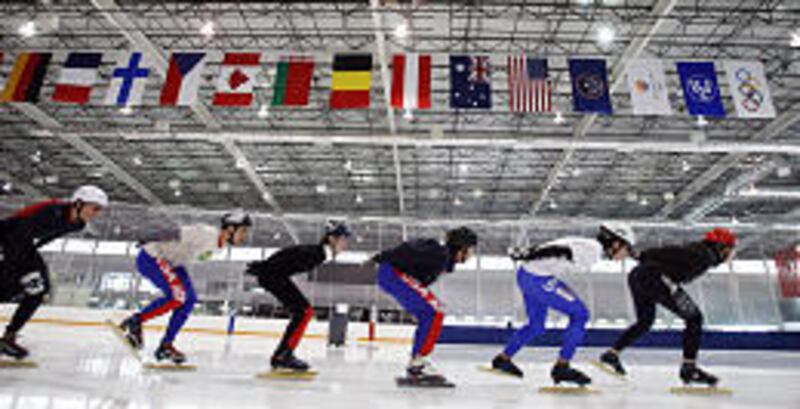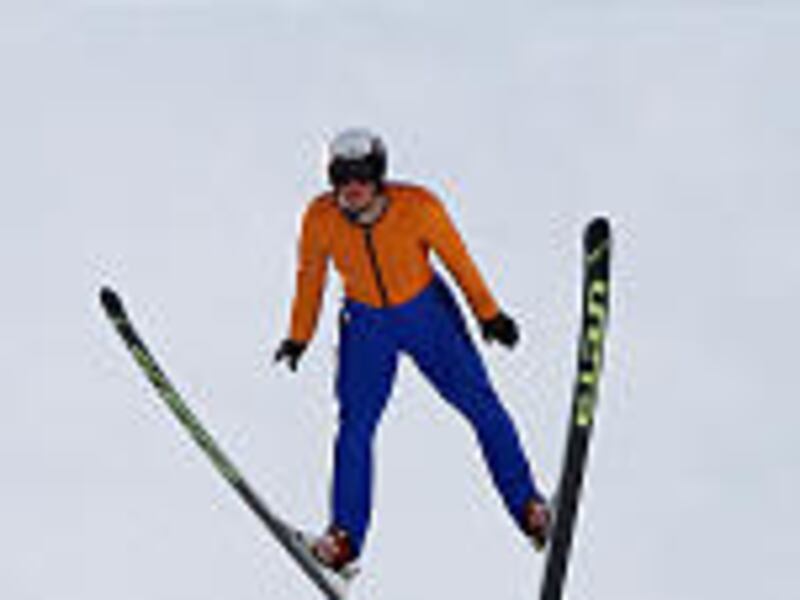BEAR HOLLOW, Summit County — Five years later, Utah Olympic Park still attracts athletes and tourists eager to experience the same ski jumps, bobsled track and training facilities used during the 2002 Winter Games.
On a recent sunny afternoon, members of Great Britain's bobsled team gathered outside the park's day lodge to discuss that day's training runs. Meanwhile, a group of tourists are headed over to the ski jumps, where a local club of young athletes are practicing.
"We're pretty excited about what has happened since the Olympic Games in 2002," said Colin Hilton, president and chief executive officer of the Utah Athletic Foundation, which oversees both the park and the Utah Olympic Oval in Kearns.
Usage is up at both Olympic facilities, Hilton said, and the amount of money the park and oval lose annually is down. But, because they continue to operate in the red, there could be major changes made at both facilities before the next anniversary of the Salt Lake Games.
Billions of people around the world tuned in to the Feb. 8, 2002, Opening Ceremonies of the Salt Lake Olympics at the University of Utah's Rice-Eccles Stadium, where typically only a few people mingle among the exhibits at the Olympic Cauldron Park.
Instead of memories, the state's post-Olympic attention — and money — was largely shifted to major sports facilities meant to serve everyone from gold-medal winners to would-be athletes.
Both facilities are owned and operated by the foundation, a private organization created by the Legislature with a $75 million endowment of Olympic profits from the Salt Lake Organizing Committee that has grown to nearly $86 million.
The annual operating losses are now about about $3.5 million, about $500,000 less than the endowment is expected to earn each year. Hilton said while that's good news, his goal is to get costs down even more so there's enough money available for capital improvements.
"It's managing how much we lose," Hilton said of running the state-built facilities that were turned over to the foundation after the Olympics. "No one in their right mind believes these facilities can be run to make money or break even."
Reducing losses, though, means cutting costs or increasing earnings.
For the sports park, that might mean a new hotel thanks to a resolution passed by the 2007 Legislature allowing a limited amount of the park's land to be sold to a private developer with government approval.
Sen. Dan Eastman, R-Bountiful, sponsored SJR1, which will enable the foundation to lease or sell up to 10 percent of the park's 386 acres. The resolution was amended to ensure any financial risk associated with such a project stays with the developer.
Eastman said the resolution is intended to protect the foundation's assets, but Hilton said it also now limits the amount of money that can be made. Still, he said, a hotel at the park is expected to boost revenues by attracting more visitors.
Hilton already has preliminary sketches showing a hotel next to the park's entrance, near the popular freestyle training pool. He said this summer, the foundation will seek proposals from developers for the project.
The foundation is no longer trying to attract interest in the project from a Chicago-based developer that has had difficulty getting approval for a 326-room lodge in the nearby Sun Peak residential area, Hilton said.
While a hotel deal could help secure the park's financial future, the oval may face tough times.
Talks are currently under way that some fear could close the oval — home to speedskating, figure skating, recreational skating, hockey, curling, indoor soccer and a running track — unless the foundation takes action. The oval is scheduled in January 2008 to revert to the service district that runs the adjacent Oquirrh Park Fitness Center in Kearns.
That has Senate Assistant Minority Whip Ed Mayne, D-West Valley, concerned.
"There's no way the citizens of Kearns can operate that oval," Mayne said, warning that the massive covered skating track would have to be boarded up if the foundation doesn't continue funding it.
"That was a promise made and it's got to be a promise kept, not just for the people in Salt Lake County but for the legacy of what was such a wonderful event five years ago," the senator said.
Hilton said negotiations between the foundation and the service district are ongoing. His goal, he said, is to reduce the annual operating loss at the oval from $1.5 million now to less than $1 million a year.
Mayne said he'll be keeping an eye on the talks. "That legacy is everybody's," he said.
A deal could be done in the next two months, Hilton said. "We have no intent of walking away from the Olympic oval," he said, but the foundation insists the service district will have to start paying some of the costs.
The oval recently became home to U.S. Speedskating, Hilton said, when the national governing body for the sport relocated its headquarters from Ohio. The Utah Sports Commission has a five-year commitment to help fund the group.
Fraser Bullock, a foundation member as well as a former head of SLOC and the chief operating officer during the Salt Lake Olympics, is optimistic about what's in store for both facilities five years after the Games.
"I think the facilities themselves do draw less attention now," Bullock said. "But there is a segment of the population that's very interested in these facilities, and that number is growing."
E-mail: lisa@desnews.com



